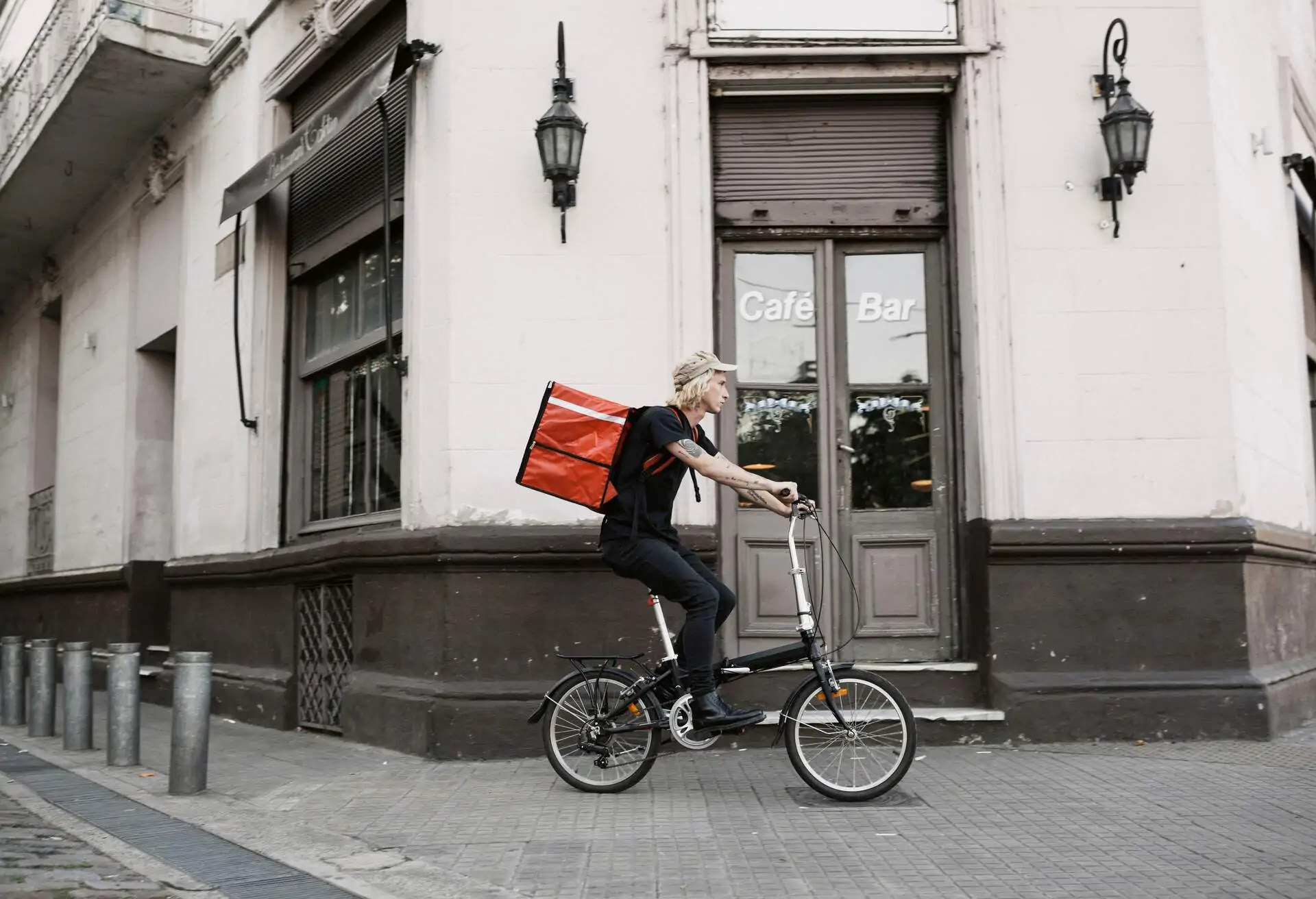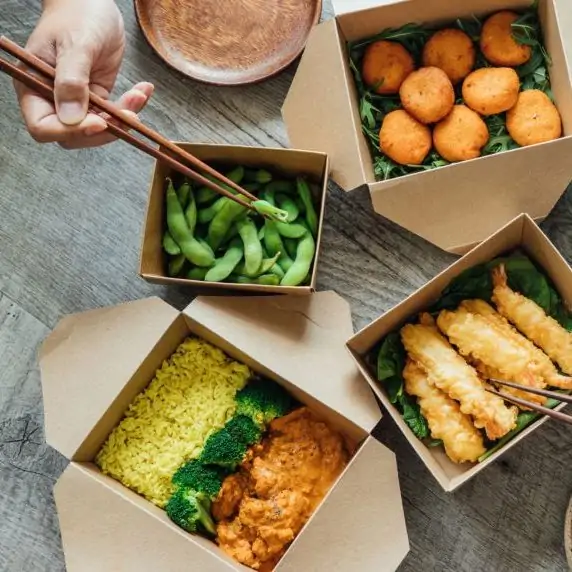Third-party delivery is booming like never before. In 2020, third-party delivery exploded because it gave restaurants a vital revenue stream during the pandemic. But even now that guests have long since returned to on-premise dining, demand for delivery remains high and shows no signs of going anywhere.
The number of people using meal delivery apps is expected to reach 2.64 billion by 2027. Restaurants can’t afford to leave that kind of money on the table, even if they’ve been hesitant to get into the game. The question is no longer whether to deliver but how to make the delivery process work for your restaurant.
Quick links
What options do restaurants have for delivery?
What is third-party delivery?
How does third-party delivery work?
What are the main third-party delivery platforms?
Pros of third-party delivery
Cons of third-party delivery
What options do restaurants have for delivery?
Third-party delivery may be the most popular, but it’s certainly not the only option restaurants have to bring their food to hungry customers. Here are two other common systems:
Phone ordering system
The old-fashioned way required people to call the restaurant to place an order over the phone. Then a member of your team needed to drive their meal to them, taking time away from the restaurant and burning expensive gas on the way.
This was never an efficient approach to delivery, and it no longer works at all for many reasons. First of all, people don’t want to make a phone call and speak to another human for almost any reason.
A full 76% of millennials have “phone anxiety.” Secondly, valid security concerns make them reluctant to recite credit card numbers over the phone. Finally, order errors can mean the food goes to the wrong address, a mistake that takes time and money to fix.
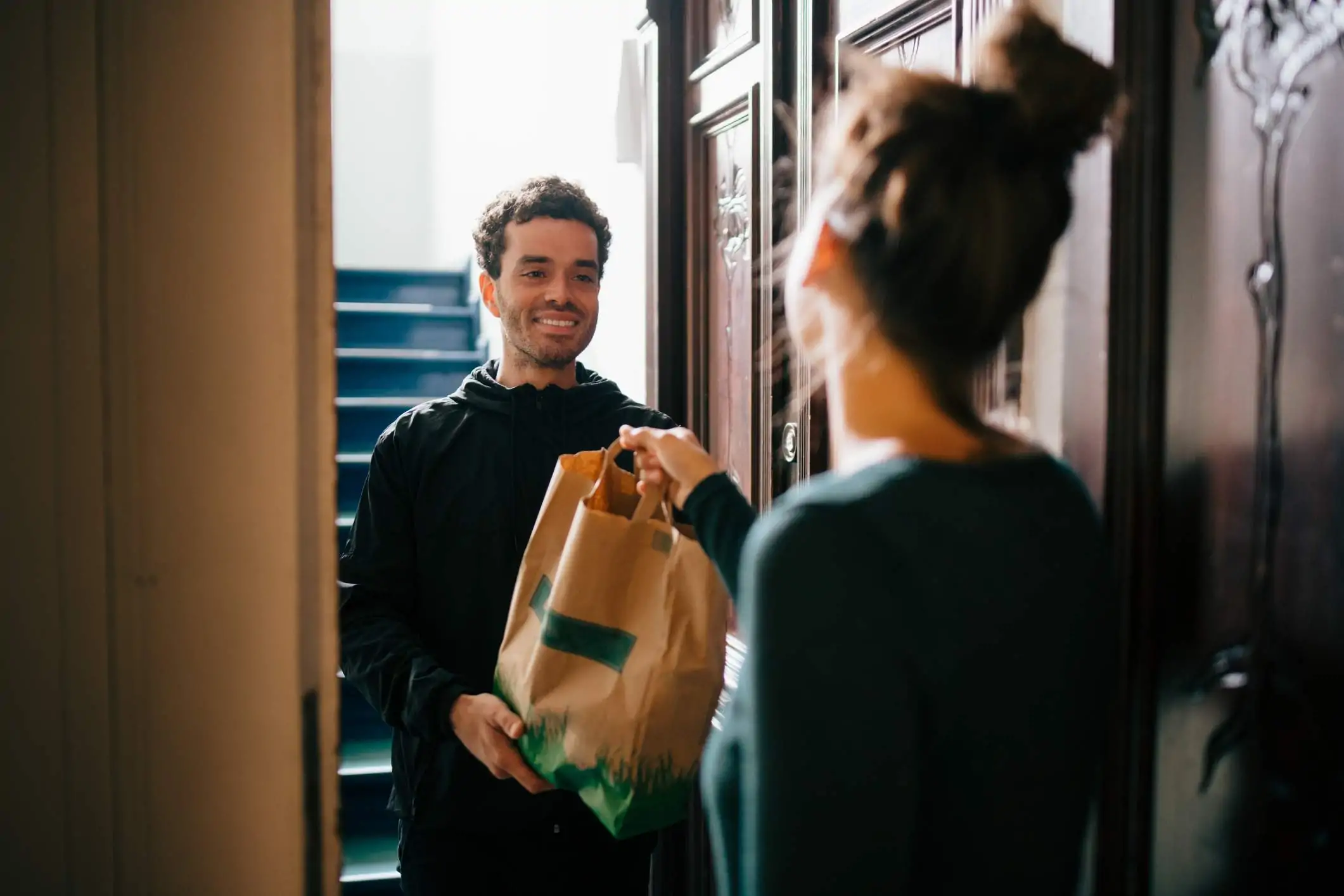
Bespoke digital ordering system
Setting up your own digital platform would be an ideal solution in a perfect world, but it takes more resources to build and operate than many smaller restaurants have. You would save money in fees over time, but it would take quite a while to recoup the up-front costs.
That leaves partnering with a third-party delivery service. You know the ones–Uber Eats and Grubhub are the biggest players, but there are many others. This is how a lot of restaurants sidestep the logistical problems of bringing delivery into the twenty-first century in a relatively easy way. But this solution is far from perfect.
Before diving into the nitty gritty issues of third-party delivery, let’s start with a high-level view of the basics:
What is third-party delivery?
Third-party delivery refers to hiring another business to handle restaurant food delivery services on your behalf. You pay these companies a fee, typically a percentage of the sale, to ferry packaged orders to hungry customers.
The driving (or biking) and hand-off of the order are the third party’s responsibility. The restaurant is still in charge of making and packaging the food.
How does third-party delivery work?
People place their food orders from restaurants online and through third-party apps, such as Uber Eats or Grubhub. The whole transaction, from ordering through payment, happens on the partner’s platform.
Third-party delivery companies earn money by charging commission fees on every order, usually 15% or more. They process payments and then make payouts to the restaurant, typically on a weekly basis.
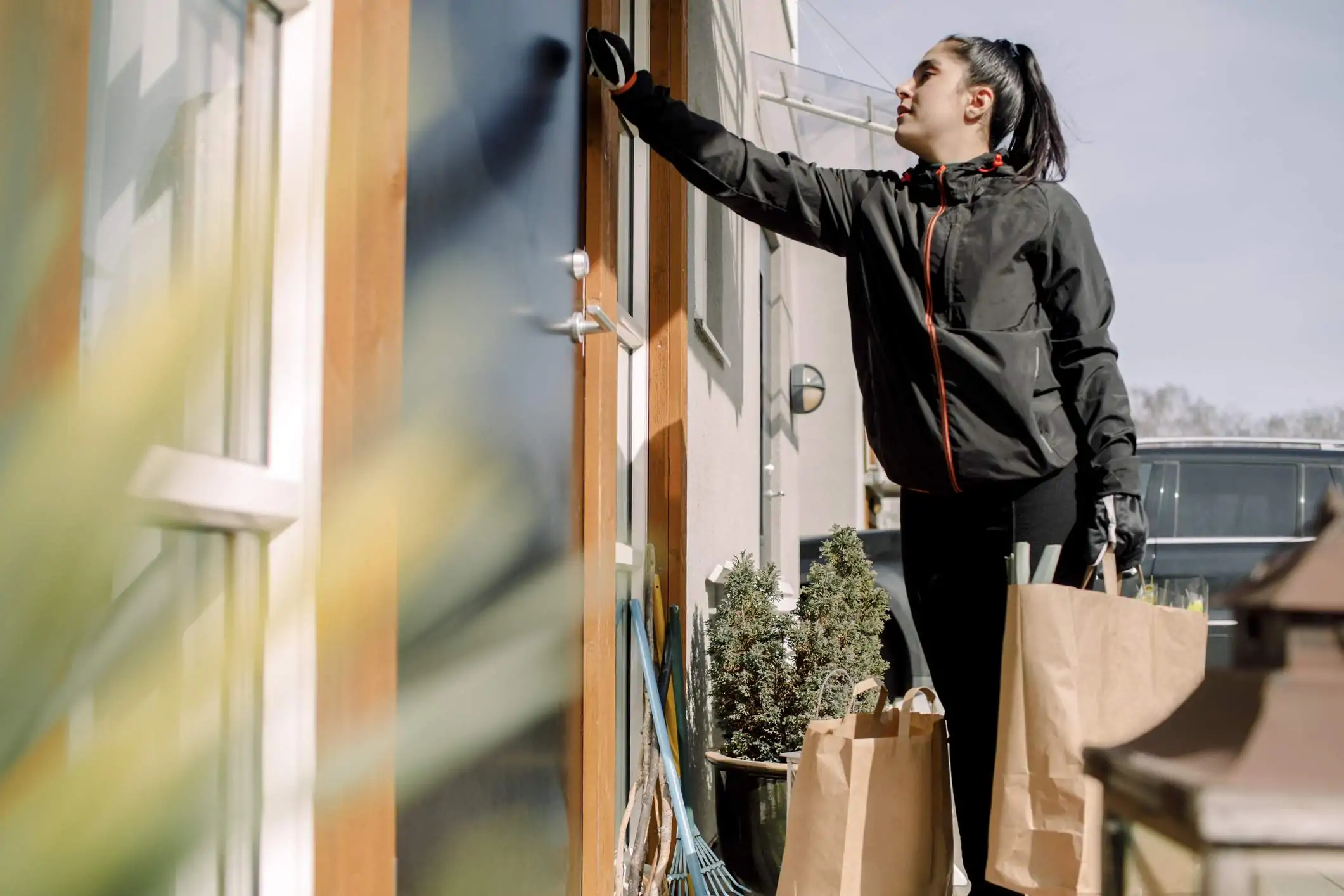
What are the main third-party delivery platforms?
Currently, the biggest players in the third-party delivery game are:
Uber Eats
As one of the leading third-party delivery platforms, Uber Eats boasts an extensive customer base and global presence.
The platform charges a commission fee on each order, and restaurants benefit from the exposure to Uber’s vast user network. Uber Eats offers a range of partnership levels, from basic delivery services to integration with marketing campaigns and promotions.
DoorDash
With a strong market share in the U.S., DoorDash is known for its efficient delivery and wide coverage. The platform charges a commission on each order and provides various options for restaurant partners, such as integration with POS systems and menu management tools.
DoorDash also offers a subscription service, DashPass, which can drive customer loyalty and increase order frequency.
Grubhub
Grubhub is a popular food delivery platform, offering a range of partnership options and services to restaurants. The platform charges a commission on each order and provides additional marketing and promotional opportunities for its partners.
Grubhub’s loyalty program, Grubhub Perks, incentivizes customers with rewards and exclusive offers.
Postmates
Acquired by Uber in 2020, Postmates is a third-party delivery service known for delivering more than just restaurant meals, including groceries.
While it shares most of its features with Uber Eats, Postmates offers a strong selling point if you’d like to expand delivery beyond traditional menu items to things like a cookbook, bags of granola, or bottled sauces.
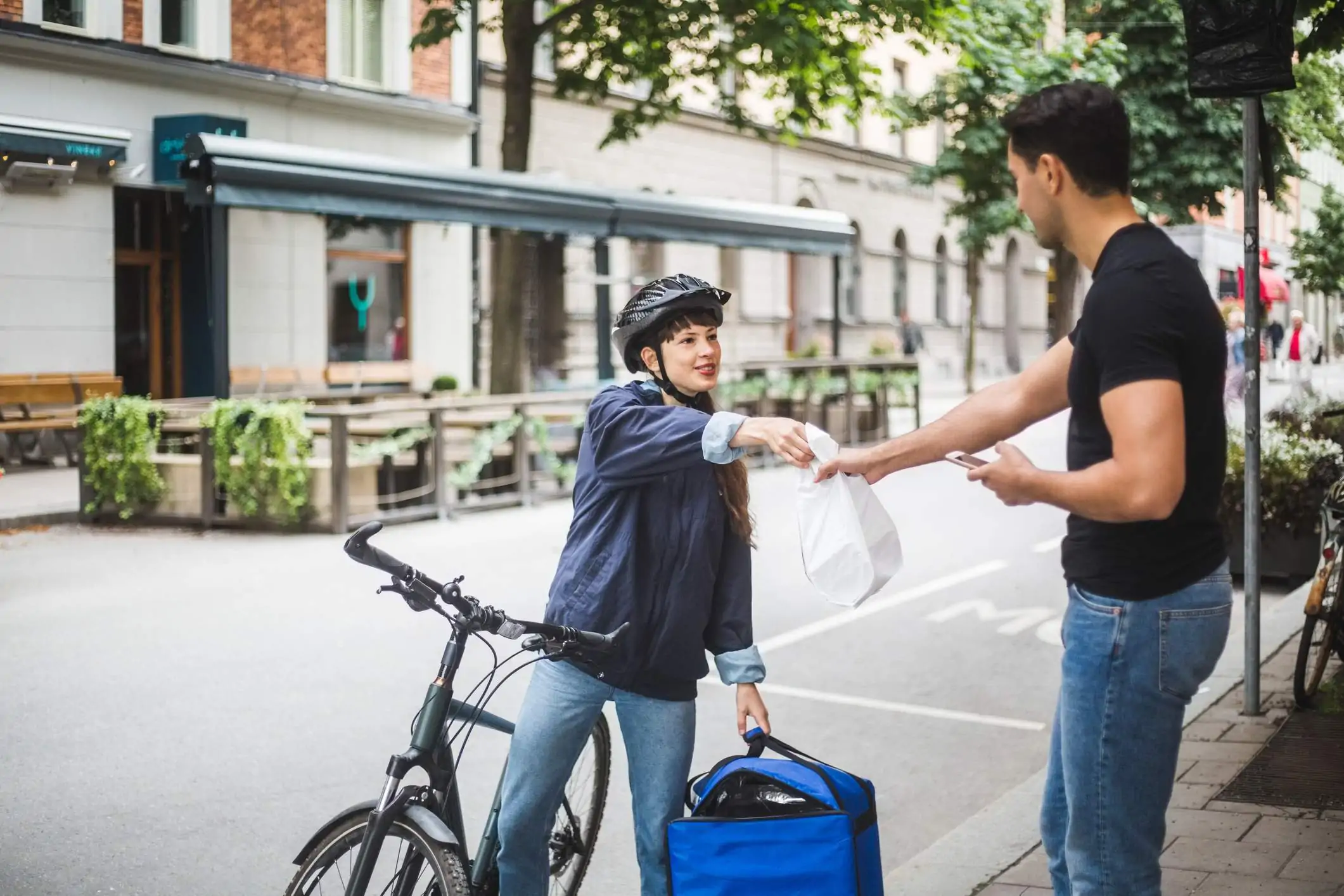
Caviar
A subsidiary of DoorDash, Caviar appeals to an upscale dining market, partnering with high-quality restaurants. This platform helps restaurant partners to reach a higher spending audience, and it charges a commission fee on each order.
Caviar might be a good choice for restaurants that want to offer a premium dining experience through delivery.
Seamless
Seamless, owned by Grubhub, is a popular delivery platform in some urban markets, especially in New York City. Seamless shares many features with Grubhub, such as commission-based pricing and marketing opportunities.
Restaurants looking to tap into specific markets where Seamless is popular may find this platform to be useful.
Restaurants choose one or more as delivery partners based on their budget, target customers, and needs. Sometimes a restaurant will work with several at once.
Though the majority of third-party delivery companies work in a similar way, there are small differences, and only a few of these are highlighted above.
Restaurants must do their due diligence and research the fine print of terms offered by each platform to find out which will work best for them. This can minimize surprises and unexpected expenses.
Now that you’ve got the broad strokes of what third-party delivery is and how it works, it’s time to take a closer look at the pros and cons.
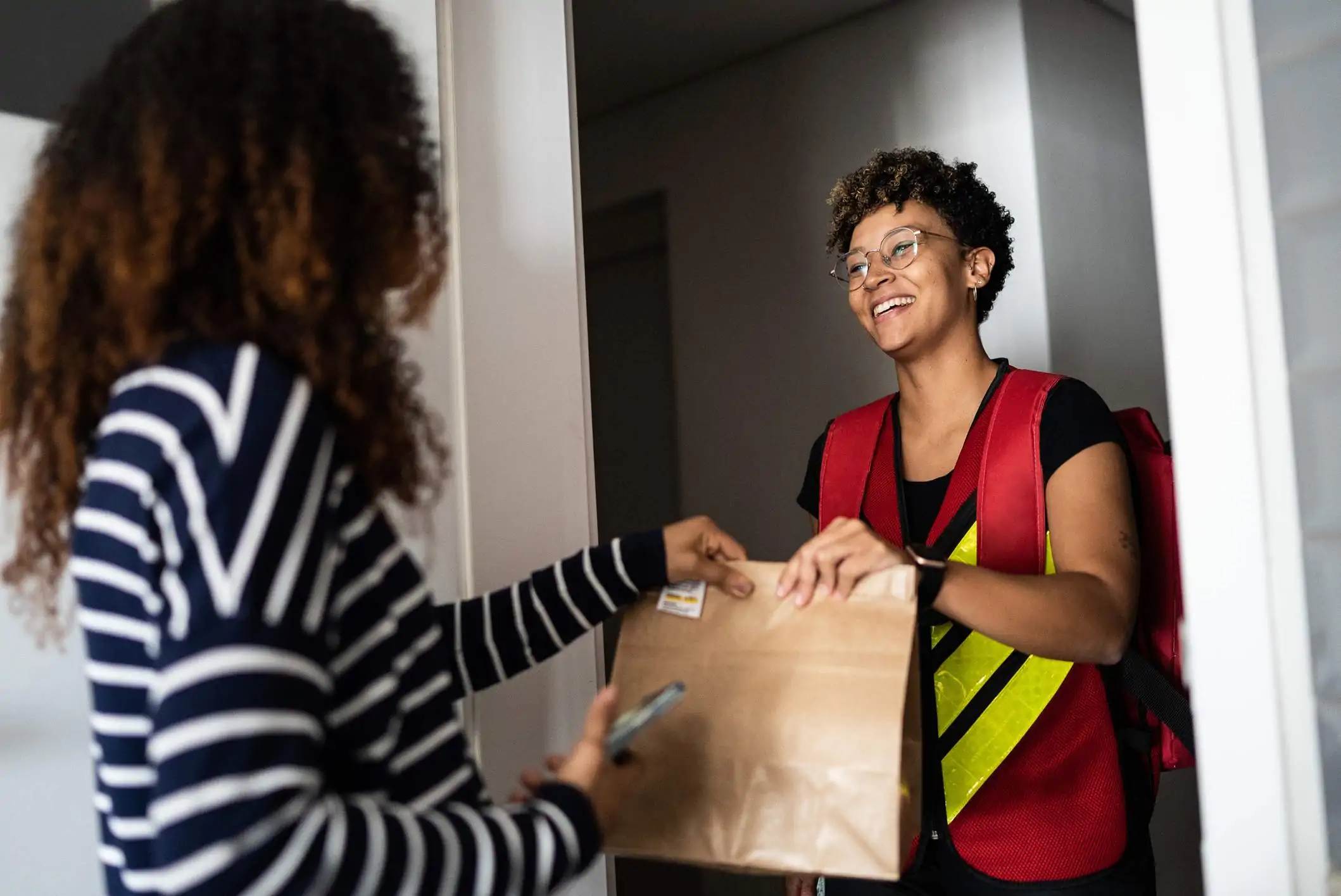
Pros of third-party delivery
There are many reasons why so many restaurants are partnering with third parties to deliver their meals to people. Here are the biggest ones:
Ease
Convenience is the biggest perk of partnering with a third-party delivery service. The partner handles the delivery so you can focus on running a restaurant.
Speed
Provided you choose a partner that integrates with your POS system, you can be up and running quickly.
Fewer upfront costs
Third-party delivery platforms also offer upfront savings over creating your own custom digital ordering system.
Staffing
And obviously, you don’t need to find employees to serve as your delivery drivers. During the current labor shortage, you likely need all hands on deck in the restaurant.
Visibility
These platforms can help you reach new diners and grow your business. Often people come to their ordering app with a craving for dumplings or meatballs and will search accordingly. It’s not uncommon for them to find new favorite restaurants this way.
Cons of third-party delivery
Some third-party delivery businesses have been in the news for their high fees and questionable business practices. Here are some reasons restaurants are seeking out alternative options for delivery:
High fees
This is the biggest con. Fees can account for 15% to 30% of sales by some estimates, cutting painfully into profit margins.
Some local legislators have pushed back. San Francisco set a cap on third-party delivery fees in June 2021, though new legislation will once again open the door to higher fees.
Broken trust
There have also been reports of these companies taking unsavory actions, like setting up a fake version of a restaurant and obscuring the facts about their fee structures. In response, restaurants in some areas have banded together to create delivery co-ops owned by the restaurants themselves to bypass using these third-party partners.
The continued demand for takeout and delivery is a big opportunity for places that can make delivery work efficiently and profitably. For many, third-party delivery companies are the right way to offer their food to at-home diners. Others may want to find or create another option. Understanding what’s out there is the first step to making the best choice for your restaurant.


